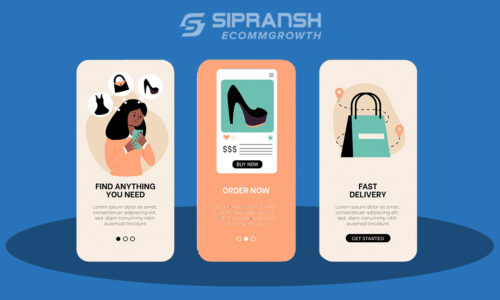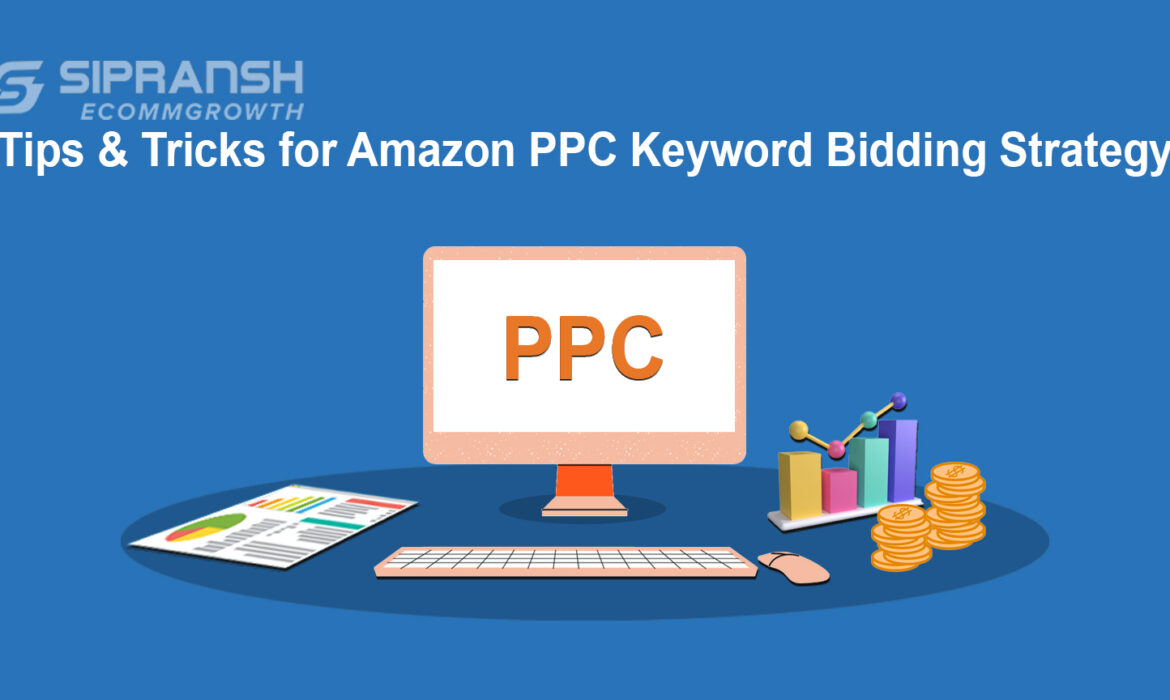
There is no mystery that advertising is crucial to generate sales and boost brand recognition. But, Amazon Sponsored ads won’t work unless you set them up perfectly. Amazon CPC is constantly increasing year after year, but over the past few years, the increment has reached double digits. The average Amazon CPC back in 2020 was at $0.79, and a year later, it hit $1.20. If you want to maintain the profitability of your ad campaigns, you’ll need to up your keyword bidding strategy. We know that there can be no one-size-fits-all strategy for PPC because every campaign and product is unique. Still, a general understanding of how keywords work and how you can efficiently dial your keyword bids can leave a huge impact on your bottom line. Now optimize your ad campaigns and get the net results you want to accomplish by developing an Amazon keyword bidding strategy correctly.
What Are Amazon Keywords?
Keywords are precise words or groups of words that advertisers use to target customers. Search terms are the phrases your shoppers would type in the search bar to find your product or service. An effective campaign should include all the keywords consumers are typing in the search bar. It contains long-tail keywords, low-volume keywords, synonym keywords, and more. While search terms are phrases used by the shopper, keywords are found through research to help advertisers find the exact word or phrase they need to target for a search campaign.
Get a comprehensive list of keywords with the following:
1. Use Amazon keyword tools such as Merchant Words & Helium10.
2. Quickly scan the title of the first-page competitors as it is a great way to target synonym keywords.
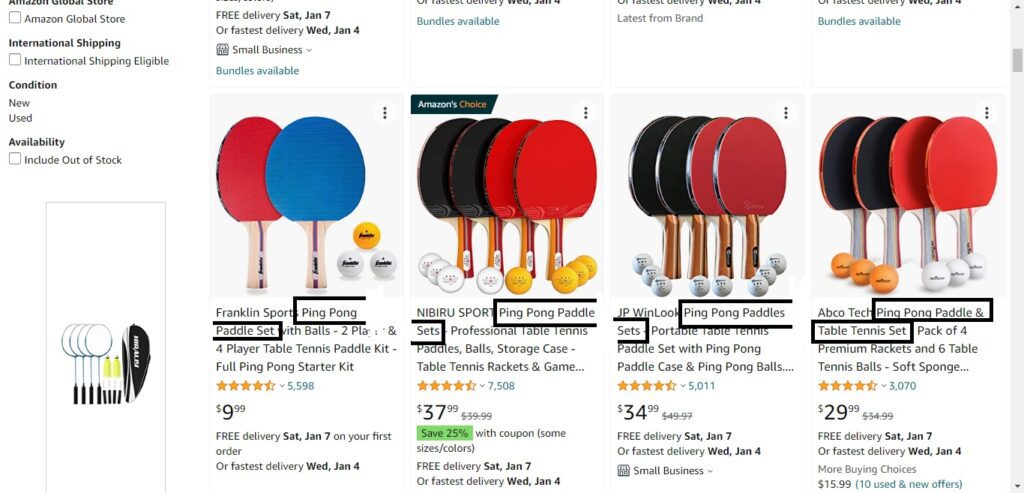
3. Go through the Amazon search term report to determine the exact terms your customers are using to find your product.
4. Get a list of long-tail keywords using Amazon’s suggestions.
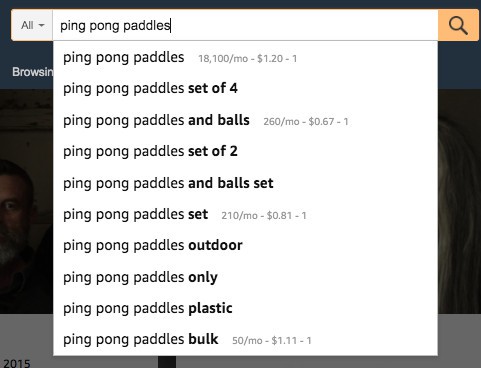
Top Ways To Improve Your Amazon Keyword Bidding Strategy
1. Specify The Bid Type
Amazon has introduced three bid types for efficient bid adjustment:
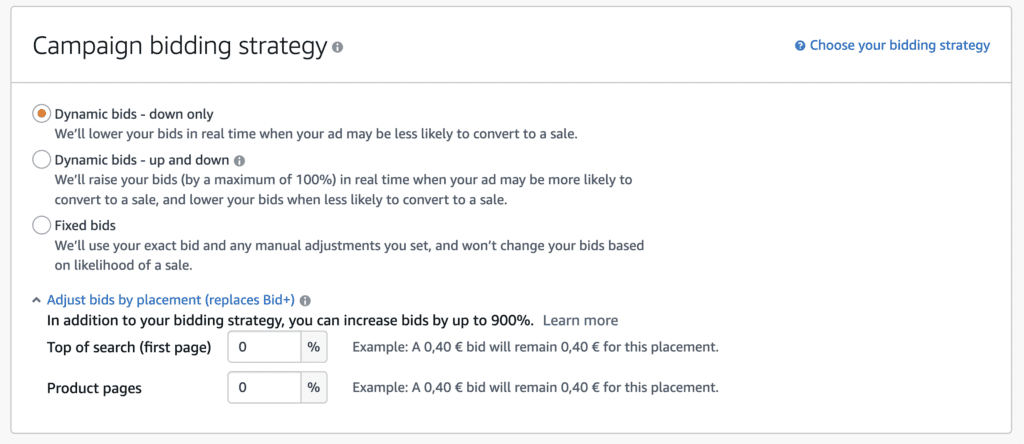
Dynamic Bidding (Down Only)
Amazon will reduce your bids — up to 100% — if your ad is less likely to convert. It was Amazon’s earlier default option. Also, it is the best option for a profit-driven scheme. It maintains ad spending in situations where conversions are doubtful.
Dynamic Bidding (Up and Down)
Amazon will raise your bid — up to 100% — if the possibility of conversion is high and decrease it when it is not. You can use this technique and still maintain a profit-driven approach! It may even be a good idea if bids manage to be positively variable in the market since it offers more flexibility.
Fixed Bids
Your bid will be your default bid and any manual adjustments you set — will not change based on the possibility of conversion. You will almost certainly overpay for a few clicks since Amazon will apply your bid to every placement regardless of the chance of a conversion.
2. Target and Bid Low-Volume and Long-Tail Keywords
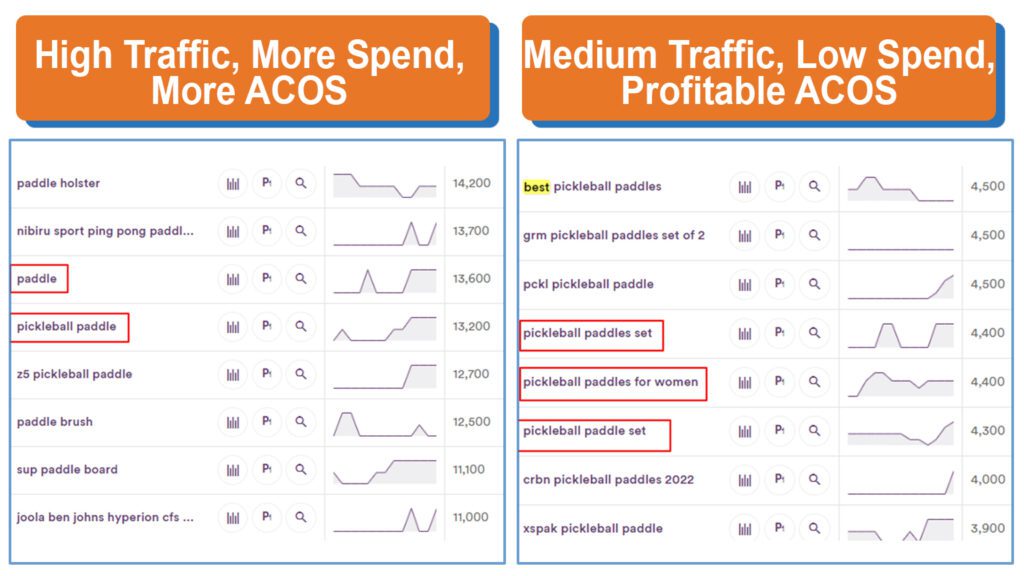
As an advertiser, if bidding on high-volume keywords can generate the most sales, it is understandable. But do a record that high-volume keywords are very competitive, and the cost-per-click (CPC) is also high. If you’re initiating Amazon PPC marketing, the most reasonable way to approach your bids is to target low-volume keywords.
Low-volume keywords generate less traffic, which also means you have less competition. The advantage of targeting low-volume keywords is maximizing profit while minimizing ACOS. There’s no point in driving tons of traffic if they are not converting. The long-tail keywords, in particular, are entirely relevant and will help you achieve a beneficial conversion rate.
3. Divide Your Keywords Under Unique Campaign
Many sellers make the mistake of adding thousands of keywords under their ad groups, expecting to gain clicks and conversions. However, not all keywords are going to generate clicks. Only some of them get impressions which is a waste. Amazon usually favors those that continue to display results. That’s why the advertisers segment their keywords so that each one of the keywords gets enough clicks and allows for a consistent budget allocation. That is why you need to divide keywords into four categories and choose only the high-performing ones.
A. Single Keyword Campaigns –
Choose a few highly relevant keywords and go fierce on those keywords (bid very heavily) with Top of Search modifiers. Make sure to allot a definite budget and separate those keywords from the others. For example, if you are selling shoes, keywords like “black leather shoes” and “brown shoes for men” are super relevant ones that you should bid aggressively on.
B. Volume-Based Separation –
Keywords that have high volumes bear off most of your budget and may not even get you conversions. If you combine high and low-volume keywords, the latter ones won’t get many impressions. So, separate them to reduce your ACoS.
C. Relevance-Based Separation –
Select super-relevant keywords and add them to your keyword buckets. It will give you more prospects as far as placement modifiers go.
D. Competitor Keywords:
You can add your competitor keywords under your single-keyword campaigns to seize competitor traffic. Remember, using competitor keywords will need you to bid way higher on them, and at times, they may not even bring you clicks, but it’s worth a shot if you want to grab your competitor’s slot.
E. Related ASINs:
If ASINs from different listing categories are sponsored together within a single campaign, it may be hard to report on the performance of each listing category. That is why you can advertise ASINs at a highly detailed level. For example, advertising “Black leather men’s shoes” instead of “Men’s shoes” will provide you with more data after it gains a sufficient number of clicks, which allows further segmentation.
F. Branded vs. Non-Branded
Branded keywords get more attention, so do not combine them with non-branded keywords. Do not forget to assign a specific budget and bidding strategy to the keywords specifically related to your brand name.
Read More: What Top Sellers Know About Amazon PPC Budgeting That You Don’t
4. Raise Your Bids Slowly And Gradually
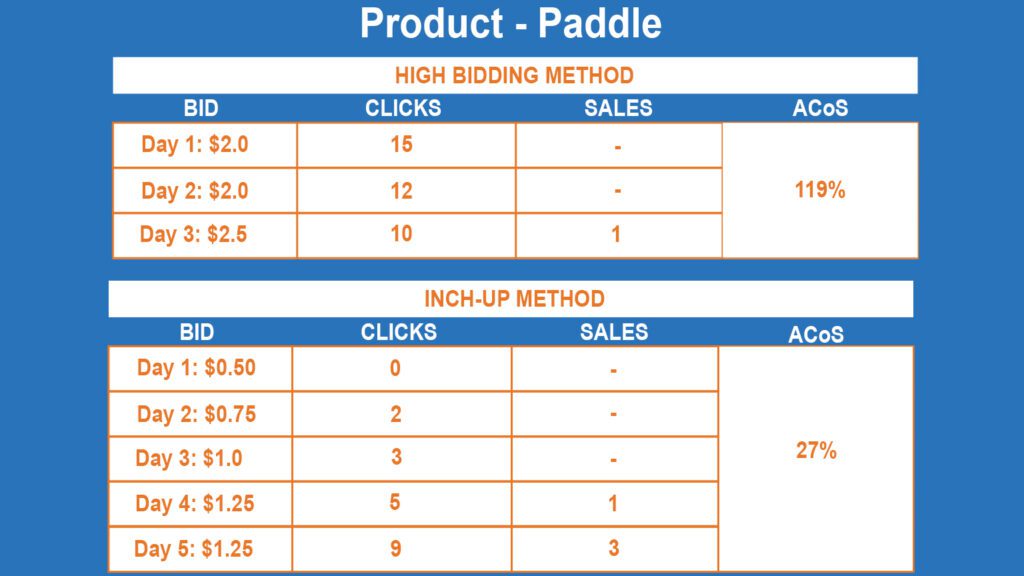
Figuring out the proper bid for a new keyword can be tricky as it requires a lot of tolerance and consideration. For example, you bid $5 on a new keyword and dropped it to $3 due to unsatisfactory conversion rates. When you do this to your other keywords, you’ll get a high ACOS that will affect the profitability of your brand.
Instead of overpricing, you should modify your bids incrementally. Set a keyword bid at $1 first day and $1.50 on the next. Follow the clicks and conversions as you gradually increase the price. This way, you can keep your ACOS low as you determine the correct bid.
While this ‘inch-up’ method won’t generate results fast, it does help you save money and build swiftness as you figure out the correct bid.
5. Do Not Bid On Expensive Keywords
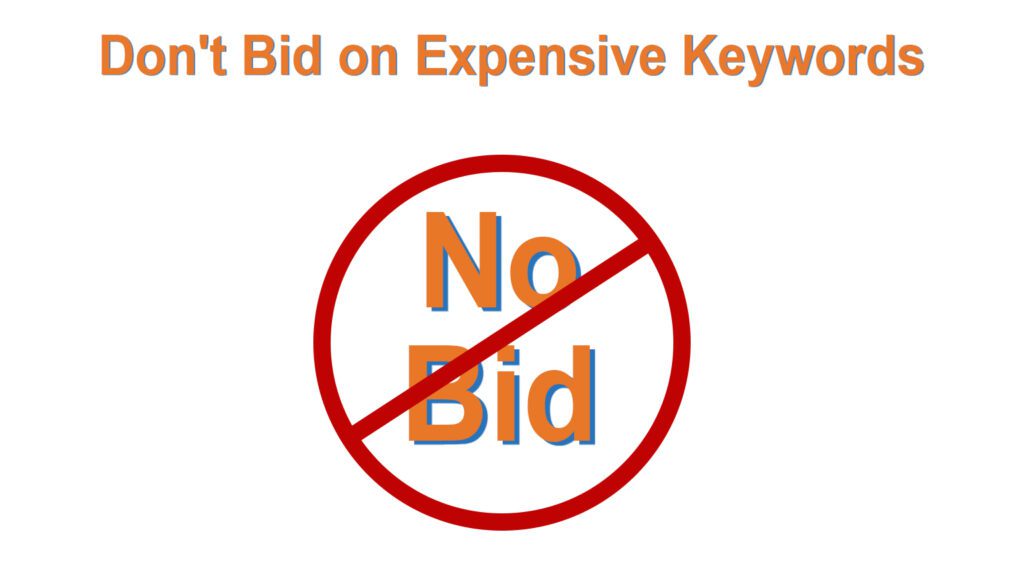
The monthly search volume for “shoes” may have more than a million searches a month, but searches for “white sports shoes” might be less than ten thousand. Because of the competition, keywords like “shoes” may cost you $7 or $10 per click with no guarantee of conversion, while keywords like “white sports shoes” have lower CPC bids and better chances of converting to sales. Recognizing and weeding out the “expensive” keywords from your campaigns helps you with enhancing the cost-per-conversion rate and profitability of your PPC campaigns.
6. Optimize, Optimize, And Optimize

Amazon PPC is a highly competitive landscape, so constantly monitor your campaigns and optimize them regularly to ensure you stay on top of your competitors. Mostly run sponsored campaigns with effort and patience to get your desired results. Once you do it right, you’ll be able to get more sales than ever before.
The key is to determine trends and estimate your competition. That way, you can make strategic adjustments and make your ads more perceptible to your target audience. Focus on essential things like ad impressions, clicks, and conversions so that you can pinch your keyword bidding strategy accordingly.
Read More: What to do if your Amazon PPC is not working?
7. Keep Your Competitors In Your Sight

If your CPCs have gone down, your competitors have probably lowered their bids. Part of a successful keyword bidding strategy is knowing what your competitors are doing. Watch your competitors and make the required adjustments to optimize your keyword bidding strategy.
8. Make Use Of Negative Targeting
If you have problems with high ACOS because of keywords that don’t convert, then one solution is to limit your ads from showing for unessential searches. Amazon allows you to mark a keyword as ‘negative’ to help save a few bucks and increase your conversion rate. If you are wondering which keywords to add to your negative list, then examine keywords that drive plenty of clicks but with small conversions. For example, if you sell ‘shoes’ but not ‘high ankle,’ you can block your ad from appearing for that search result. Negative targeting optimizes your ad for eligible users and improves product ranking, which can help drive sales.
9. A/B Test Various Placements
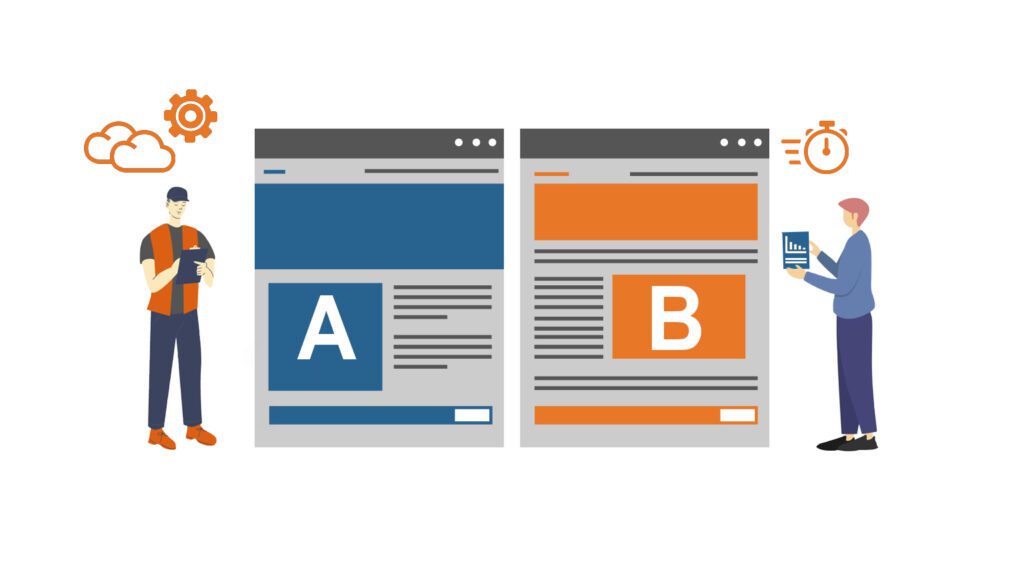
Top-of-the-page placement sure voices nice, but it’s not always promising. Advertisers chuck money to rank in the top position, believing that the higher their products are top in the results, the better they’ll perform. But it is not true at all. You may find that the middle page and bottom of the page are more cost-effective and obtain just as many sales as top-of-the-page placements. Although the top place will get you more traffic, it does not always guarantee more sales. While the bottom of the page will get you comparatively less traffic, each customer you will get will cost you less.
10. Use AI To Your Benefit
Although it’s still relatively new, Amazon AI has taken the world by storm. Some advertisers prefer to compare the differences between Amazon AI and rule-based bidding. Those in favor of artificial intelligence can use it to their advantage by automating bids, recording trends, factoring in historical data, and setting individual parameters.
11. Use Your Placement Function In Campaigns
The placement function is a unique feature that allows you to increase or decrease your placement percentage based on your searched KPIs. It is an excellent way to adjust your bids throughout your campaign to keep you on track with your goals. It is one of the most straightforward strategies to adapt quickly at any time during any stage of the advertising campaign.
Conclusion
Want to increase click and conversion success for your next campaign? Develop the best bidding strategy for your campaign today with our Amazon PPC Management services. Our PPC experts will develop effective marketing strategies and provide different Ad solutions to our clients to maximize their brand visibility, reach millions of Amazon customers and boost sales. Join our Amazon PPC Management Services and get effective results today!



